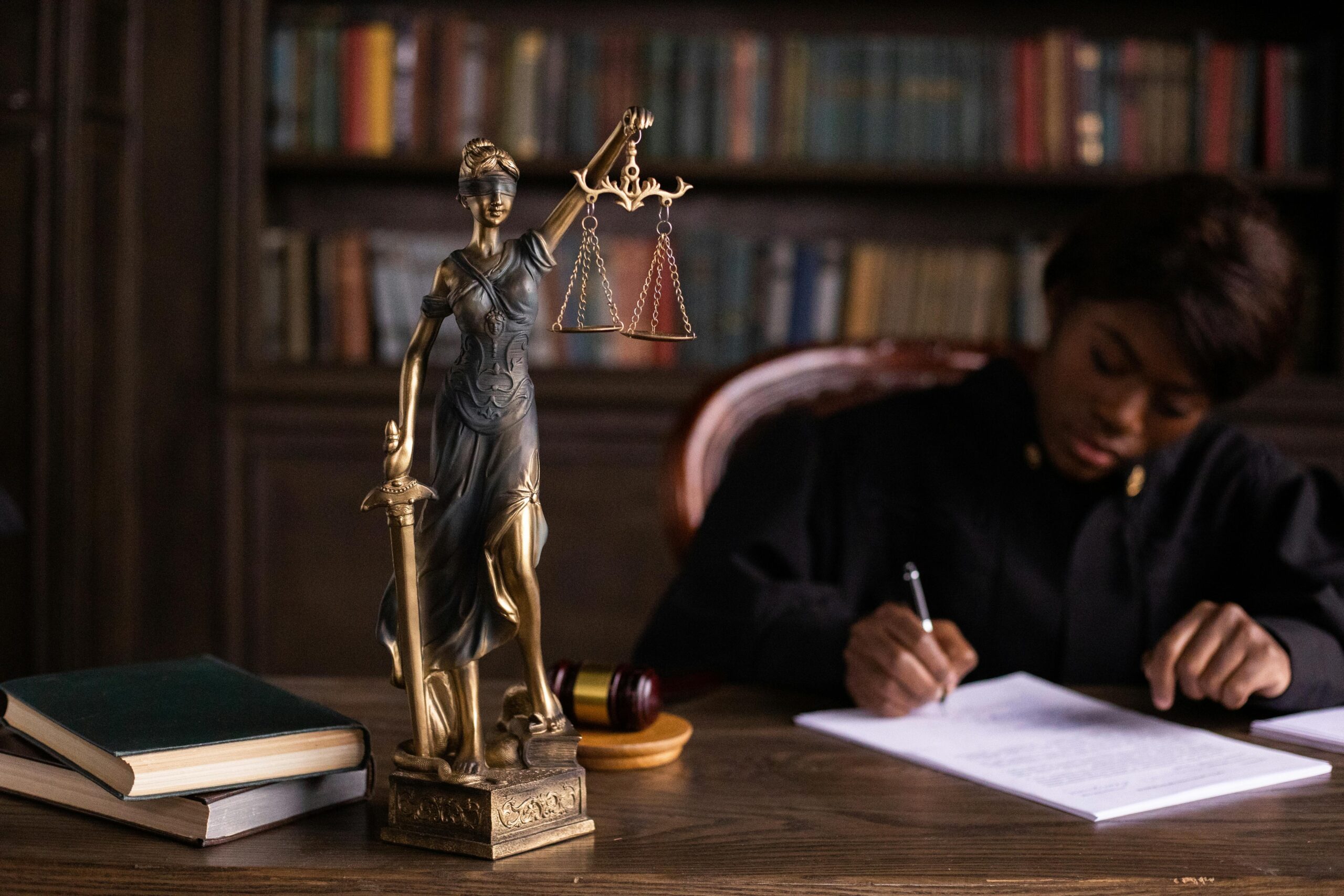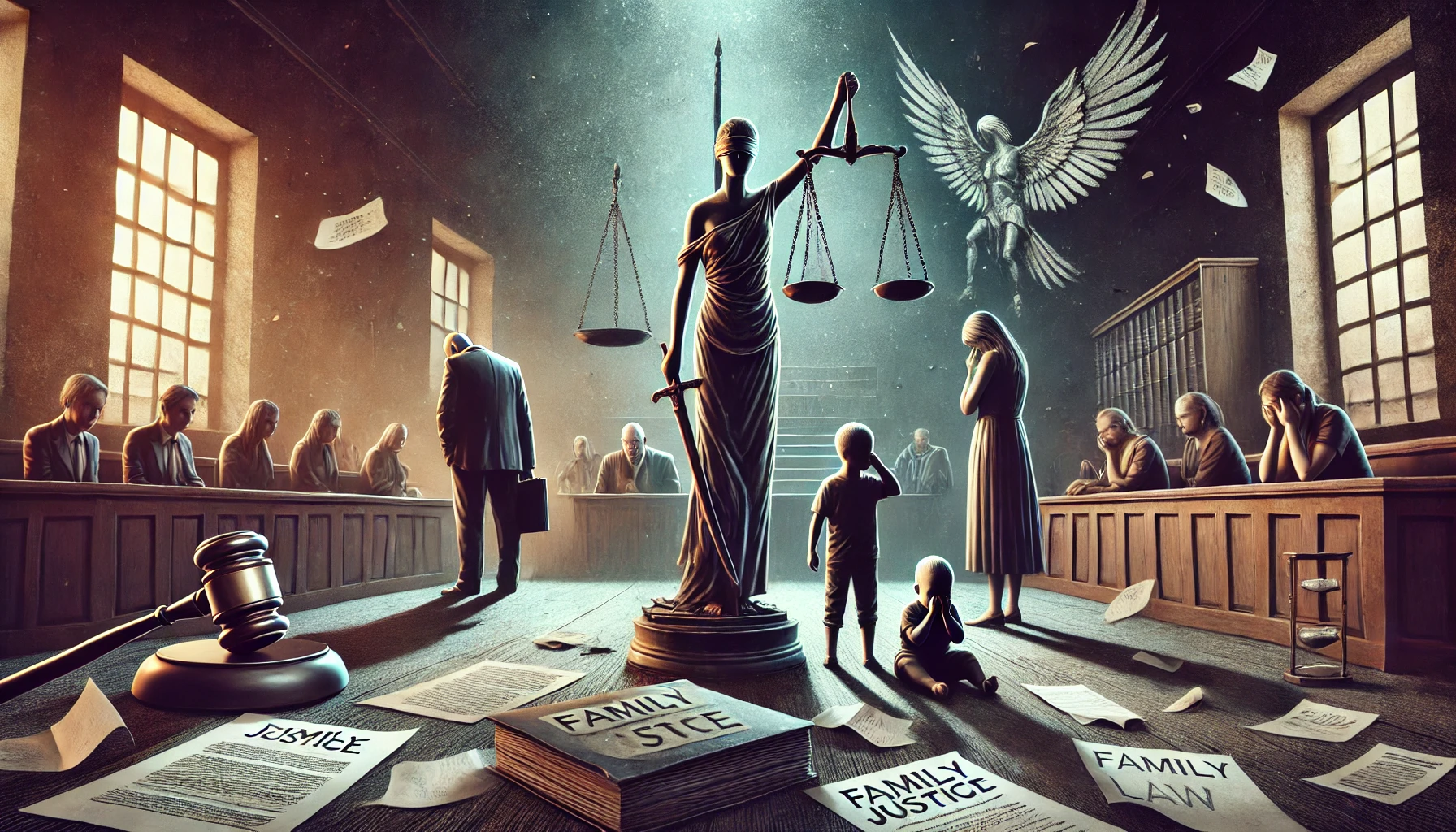Authored By: MERCY OLUWANIFEMI OLA
ADEKUNLE AJASIN UNIVERSITY
Abstract
The worldwide streaming advancement has changed the way music is played, enjoyed, spread out, and commercialized.
Yet, the legal frameworks governing music licensing remain rooted in territorial, analog era structures ill-suited to the demands of a digital, borderless marketplace. As streaming platforms enable near-instant access to music worldwide, territorial fragmentation of copyright licensing, opaque royalty distribution systems, and jurisdictional inconsistencies create significant legal and practical challenges for artists, rights holders, and platforms alike.
Focusing on the disparate legal systems of the US, the EU, and important international institutions such as the Trade-Related Aspects of Intellectual Property Rights (TRIPS) Agreement and the Berne Convention, this essay examines carefully the evolving environment of international music licensing.
It highlights systemic inefficiencies, transparency deficits, and competition law concerns that undermine fair remuneration and cultural diversity in the global music ecosystem.1 Drawing on recent case law, policy developments, and emerging technologies, the article argues for a more harmonized, transparent, and artist-centered approach to global music licensing. It proposes a series of legal and regulatory reforms, including international cooperation on licensing standards and the deployment of blockchain-based transparency tools, that can better align the law with the realities of the streaming age.
Introduction
Streaming platforms like Spotify, Apple Music, YouTube Music, and regional services now lead the worldwide music marketplace, providing billions of tracks swiftly to consumers across nations.
According to the International Federation of the Phonographic Industry (IFPI), streaming accounts for over two-thirds of global recorded music revenues. What was once a domestic sector has evolved into an ecosystem that is intrinsically global. But the legal system that governs music licensing and revenue production has not kept up with this technological advancement.
Copyright licensing systems remain largely national or regional in scope, shaped by outdated territorial paradigms. Collective management organizations (CMOs), direct licensing practices, and legal doctrines vary widely across jurisdictions, resulting in fragmentation, inefficiency, and inequity in the way music rights are administered and enforced globally.
The consequences are profound: artists struggle with opaque royalty streams and delayed payments; platforms face complex and costly multi-jurisdictional licensing negotiations; and smaller markets and diverse cultural voices risk being marginalized in the global digital marketplace.
This article examines the interplay of international streaming and international music licensing from a legal perspective. It examines key comparative frameworks, including the European Union’s evolving copyright regime, the United States’ Music Modernization Act, and international legal instruments such as the Berne Convention and TRIPS Agreement. The article also analyzes pressing legal challenges, including transparency deficits, territorial fragmentation, and competition law concerns.2
In addition to evaluation, the paper seeks to offer practical suggestions. It advocates for greater harmonization of licensing practices, enhanced transparency through technological innovation, and a renewed focus on the rights and remuneration of artists and cultural creators. The law must change in this century of easily transnational music in order to safeguard and advance artistic freedom and cultural variety.
Background: The Global Structure of Music Licensing
Types of Music Rights Involved
Music streaming typically requires permission for a number of distinct rights: Public performance rights become effective when music is performed or expressed publicly, such as through streaming.
Mechanical rights concern the reproduction of musical works, including the creation of digital copies for streaming or download.
Synchronisation rights need to be obtained when music is mixed with audiovisual materials (for example, video songs, film soundtracks) and are usually negotiated separately. Neighbouring or associated rights refer to the rights of performers and producers of sound audio recordings, with licensing practices that vary by region.
The Role of Collective Management Organizations (CMOs)
CMOs pay licence holders, negotiate authorisations, and collect royalties.
Prominent CMOs include:
EU: The Society of Authors, Composers and Publishers of Music (SACEM) (France), Performing Rights Society (PRS) for Music (UK), Gesellschaft fur musikalische Auffuhrungs- und mecheanische Vervielfalfaltigungsrechte (GEMA) translates to Society for Musical Performing and Mechanical Reproduction Rights (Germany), and Societa Italiana degli Autori ed Editori (SIAE) translates to Society of Authors and Publishers (Italy).
U.S: American Society of Composers, Authors and Publishers (ASCAP), Broadcast Music, Inc (BMI), Society of European Stage Authors and Composers (SESAC) (public performance); Mechanical Licensing Collective (MLC) (mechanical rights post-MMA).
Global: The International Confederation of Societies of Authors and Composers (CISAC), BBIEM.
While CMOs enable efficient rights clearance, their practices lack uniformity across jurisdictions. Disparities in governance, transparency, fee structures, and distribution methods contribute to market fragmentation.
The Rise of Direct Licensing
Large music publishers and streaming platforms increasingly pursue direct licensing arrangements to bypass CMOs, seeking greater control over licensing terms and revenue shares. However, this trend raises competition concerns and risks marginalizing smaller rights holders and markets.
Comparative Legal Framework
European Union
The EU’s Copyright in the Digital Single Market Directive (Directive (EU) 2019/790) requires online platforms to obtain authorisation to communicate works to the public and imposes transparency and fair remuneration obligations. The Collective Rights Management Directive (Directive 2014/26/EU) aims to improve multi-territorial licensing efficiency but disparities persist.3
The ECJ has adjudicated key cases:
Tiercé Ladbroke SA v Commission (C-351/04) \[2008] ECR I-1201.
Tournier v SACEM (C-395/87) \[1989] ECR 2521.
United States
The Music Modernization Act 2018 centralised mechanical rights licensing via the MLC. Under the DOJ authorisation rulings, ASCAP, BMI, and SESAC continue to handle public performance rights.
Synchronisation rights and digital performance rights are governed by complex and fragmented legal frameworks, contributing to a highly litigious landscape.4
International Instruments
Berne Convention for the Protection of Literary and Artistic Works (1886, as revised 1971).5 TRIPS Agreement (1994), arts 9–14.6
WIPO Copyright Treaty (1996).
Other Jurisdictions
Japan and South Korea promote cross-border licensing while retaining traditional CMO practices. China operates a state-influenced system with inconsistent enforcement of foreign copyrights.
Challenges in Cross-Border Licensing
Territorial Fragmentation
Despite the global nature of digital music streaming, licensing remains fundamentally territorial.These sites must negotiate distinct licenses for every single nation, frequently partnering with various CMOs or publishers. This raises the price of transactions and reduces the accessibility of music throughout the markets. For example, European platforms must negotiate separately with CMOs in each member state unless a multi-territorial licence is available; this is only somewhat addressed through the EU Collective Rights Management Directive.
Outside the EU, platforms often face even greater complexity, as no harmonised licensing framework exists for Asia, Africa, or Latin America.
As a result, many niche markets remain underserved. Systemic obstacles prevent independent musicians from smaller regions from getting fair compensation or having their music featured on international platforms. Conversely, consumers in smaller markets may not have access to the same music catalogs available in major markets due to licensing gaps.
Transparency and Fairness
Lack of transparency in the streaming economy is a persistent concern among artists, rights holders, and regulators. Royalty calculations are complex and often opaque, involving a chain of intermediaries, platforms, labels, publishers, CMOs, with each taking a cut before the artist receives payment.
Research by the European Parliament and academic studies show that many artists earn fractions of a cent per stream, often with little clarity as to how these amounts are determined. Attempts to audit CMO accounts or platform payments are frequently hampered by legal, practical, or jurisdictional barriers, especially in cross-border contexts.
Furthermore, the commercial structure of streaming favours major artists and catalogue owners. The top 1% of songs make an inordinate amount of money, according to the “superstar economics” criterion.Artists who operate independently from less developed nations deal with fundamental obstacles that prevent their music from being featured on worldwide distribution channels and receiving fair royalties.
Competition and Market Power
The global music licensing landscape is increasingly concentrated:
Three major record labels, Universal Music Group, Sony Music, and Warner Music Group— control the majority of recorded music rights.
Major publishers and large CMOs wield significant bargaining power.
Streaming platforms themselves are highly concentrated, with Spotify, Apple Music, and YouTube Music controlling most of the global market.
Direct licensing deals between large publishers and platforms risk exacerbating inequalities. Such deals can sideline CMOs and collective arrangements designed to protect smaller rights holders. Competition law uncertainties have arisen, especially in the EU, where regulatory bodies have examined whether direct licensing threatens market fairness.
In one instance, the ECJ’s jurisprudence emphasises the dangers of territorial monopoly systems and cruel licensing standards.
Yet, enforcement remains uneven, and many licensing markets lack effective competition oversight.
Legal Uncertainty
Cross-border licensing involves complex conflicts of law:
Determining which country’s copyright law governs a stream accessible worldwide is legally challenging.
Jurisdictional questions arise regarding which courts have authority to adjudicate licensing disputes or enforce royalty payments.
Depending on national restrictions and exemptions from copyright and licensing, what is permissible in one country may be illegal in another.
This uncertainty increases legal risk for platforms and rights holders alike. Smaller industry players, specifically, could lack the financial means to effectively deal with these challenges, exacerbating current imbalances in the international music market.
Recent Case Laws and Disputes
Spotify v. Publishers
Spotify has faced multiple lawsuits by U.S. publishers over mechanical royalty underpayments, leading to the MMA and creation of the MLC.
ECJ Jurisprudence
Key ECJ decisions include Tiercé Ladbroke and UsedSoft GmbH v Oracle International Corp (C 128/11) \[2012] ECR I-0000.
U.S. Rate-Setting Litigation
The current legal difficulties of music licensing are highlighted by the Copyright Royalty Board (CRB)’s decision regarding structural and performance royalty rates.
Conclusion
Although music has become a universal language, the laws governing its licensing are obstinately national.
The rise of streaming platforms exposes the inefficiencies, inequities, and opacity of existing cross border licensing systems. While initiatives like the EU Copyright Directive and the U.S Music Modernization Act offer partial progress, the global legal framework remains fragmented.7
While initiatives like the EU Copyright Directive and the U.S. A new approach is required, one that combines legal consistency, technological innovation, and a renewed emphasis on artists’ rights and interests.
Policymakers, regulators, and industry stakeholders must seize the opportunity to reshape global music licensing for the streaming age. When they do so, they can guarantee that the law promotes not solely the economic viability of platforms, but also the varied cultural composition and artistic vitality of the international music community.
Recommendations and Legal Pathways Forward
Harmonised Licensing Frameworks
Regional harmonisation offers a proven path toward more efficient cross-border licensing. The EU’s experience demonstrates that targeted legislative intervention can enhance transparency and foster multi-territorial licensing, though further reform is needed.
Other regions could adopt similar approaches:
ASEAN could develop a regional licensing framework as part of its digital economy agenda.
The African Continental Free Trade Area (AfCFTA) could incorporate creative industry provisions, including harmonised copyright licensing standards.
Latin American regional bodies could encourage national CMOs to work together to organise licensing.
Ultimately, a global model treaty under WIPO auspices could set minimum standards for transparency, fair remuneration, and cross-border licensing efficiency. Such a treaty could build on the provisions of the Berne Convention and TRIPS, modifying them to reflect the practicalities of the streaming age.8
Technology for Licensing Transparency
Blockchain technology has great promise for improving transparency and efficiency in music licensing.
A blockchain-based ledger could track rights ownership and usage across jurisdictions in real time.
Smart contracts could automate royalty calculations and payments, reducing transaction costs and delays.
Artists and smaller rights holders could gain direct visibility into how their works are used and monetised globally.
However, legal challenges remain:
Data privacy laws, such as the EU’s General Data Protection Regulation (GDPR), may constrain how rights and payment data can be recorded and shared on public blockchains.
Legal recognition of smart contracts varies across jurisdictions, raising implementation concerns. Standards for interoperability and data quality must be developed to ensure] blockchain systems deliver genuine transparency.
Policymakers and industry stakeholders should collaborate to address these challenges and promote the responsible adoption of blockchain-based transparency tools.
Strengthening Artist Rights
Legal reforms should strengthen artist rights in several key ways:
Providing audit rights for artists and rights holders, that involve global licensing agreements. Mandating clear reporting by platforms and CMOs on streaming economics and royalty flows.
Establishing fair remuneration principles in national law, including minimum rates or revenue share thresholds to ensure artists receive equitable compensation.
Furthermore, internationally binding agreements such as the TRIPS and WIPO treaties should include more detailed clauses for artist rights, acknowledging that fair compensation is a critical component of an economically viable creative ecosystem.
Competition Law Tools
Regulators should deploy competition law more actively to ensure fairness in global music licensing:
Scrutinising direct licensing deals for anti-competitive effects.
Addressing market power abuses by dominant platforms or major rights holders.
Promoting initiatives that enhance market diversity, such as collective licensing arrangements for independent artists and smaller publishers.
Enhanced competition enforcement can help level the playing field and ensure that the streaming economy supports a vibrant and diverse global music culture.
New Global Norms
The time is ripe for developing new global norms for music licensing:
A revised TRIPS 2.0 or a new WIPO treaty could set minimum openness, equitable compensation principles, and efficient procedures for international licensing. Global collaboration ought to handle implementation issues, making cross-border royalty collection and delivery more efficient.
Platforms should be encouraged to adopt global best practices voluntarily, supported by regulatory incentives and industry codes of conduct.
The worldwide community can ensure that the streaming changes favours not only traditional services and major market stakeholders, but also a wide spectrum of artists and cultural creators worldwide.
Bibliography
Berne Convention for the Protection of Literary and Artistic Works (1886, as revised 1971) Consolidated Version of the Treaty on the Functioning of the European Union \[2012] OJ C326/47 Council Directive 2014/26/EU on collective rights management \[2014] OJ L84/72
Directive (EU) 2019/790 on copyright and related rights in the Digital Single Market \[2019] OJ L130/92
TRIPS Agreement (1994) Marrakesh Agreement Establishing the World Trade Organization, Annex 1C
WIPO Copyright Treaty (1996)
Tiercé Ladbroke SA v Commission (C-351/04) \ [2008] ECR I-1201
Tournier v SACEM (C-395/87) \ [1989] ECR 2521
UsedSoft GmbH v Oracle International Corp (C-128/11) \ [2012] ECR I-0000
IFPI, ‘Global Music Report 2024’ (IFPI, 21 March 2024) [https://www.ifpi.org/reports] (https://www.ifpi.org/reports) accessed 11 June 2025
Graham Greenleaf, ‘The Global Development of Free Access to Legal Information’ (2010) 1(1) EJLT [http://ejlt.org//article/view/17] (http://ejlt.org//article/view/17) accessed 11 June 2025
Paul Craig, ‘Theory, “Pure Theory” and Values in Public Law’ \ [2005] PL 440 Lionel Bently and Brad Sherman, Intellectual Property Law (5th edn, OUP 2022) David Gervais, International Intellectual Property: A Treatise (Kluwer Law International 2020)
1 Berne Convention for the Protection of Literary and Artistic Works (1886, as revised 1971)] [Marrakesh Agreement Establishing the World Trade Organization, Annex 1C (TRIPS Agreement) (1994)
2 Berne Convention for the Protection of Literary and Artistic Works (1886, as revised 1971); Marrakesh Agreement Establishing the World Trade Organization, Annex 1C (TRIPS Agreement) (1994); Music Modernization Act 2018, United States.
3 Directive (EU) 2019/790 of the European Parliament and of the Council of 17 April 2019 on copyright and related rights in the Digital Single Market [2019] OJ L130/92.
4 Music Modernization Act 2018, United States.
5 Berne Convention for the Protection of Literary and Artistic Works (1886, as revised 1971).
6 Marrakesh Agreement Establishing the World Trade Organization, Annex 1C (TRIPS Agreement) (1994).
7 Music Modernization Act 2018, United States.
8 Berne Convention for the Protection of Literary and Artistic Works (1886, as revised 1971).





